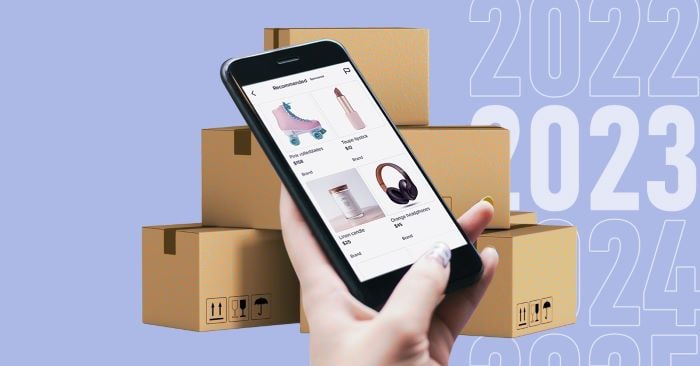Is Social Commerce Still A Worthy Marketing Strategy in 2023?

You’ve probably heard the term “social commerce” thrown around over the last year or two. Social commerce is one of the fastest-growing trends in the Philippines as a result of how much time consumers, particularly younger generations, spend on social networking sites.
The social commerce sector is outpacing traditional e-commerce channels and physical retail establishments in the Philippines as consumers increasingly turn to social media platforms to find and buy products via social networking sites.
According to Research and Markets, the social commerce industry in the Philippines is expected to grow by 30.4% in 2022, with gross merchandise value estimated at $682 million. Apart from that, it is expected to grow by 27% annually to reach $2.7 trillion by 2028.
Research by A Global Web revealed that Filipinos have embraced online shopping and are likely to do so even after the pandemic is over. Around 62.5% of the population purchased a product online, with 43 million purchasing goods via the internet.
The growth will be driven by Gen Z and millennial consumers, who will account for 62% of global social commerce spend by 2025, Accenture reported. The report also found that clothing (18%), electronics (13%), and home decor (7%) will make up the highest number of purchases globally.
Parallel to the emergence of the social commerce sector in the Philippines is the expansion of the same industry in Southeast Asia. Despite having one of the world’s youngest populations, Southeast Asia is expected to remain one of the most important markets for social commerce over the next four to eight quarters.Social commerce accounted for more than 45% of Southeast Asia’s e-commerce sector in 2021 alone, and that percentage is expected to rise in 2022.
Social Commerce Trends in the Philippines
To capitalize on the growing social commerce trend, platforms such as Meta’s Facebook and Instagram, as well as TikTok, have introduced new shopping features and partnerships.
With over one billion active users worldwide, video platform giant TikTok is also reshaping the way consumers discover new products and shop. It recently launched its own marketplace, “TikTok Shop,” which offers a new shopping experience for users as well as opportunities for content creators. It debuted in Indonesia and the United Kingdom early last year, and it has since expanded to Vietnam, Thailand, the Philippines, Malaysia, and Singapore.
Users can purchase fashion, home and living, beauty, and personal care items—providing more business opportunities to local brands and small-to-medium-sized enterprises (SMEs). These products can be purchased through anchors embedded in short videos, live streams, and the TikTok Product Showcase tab, which can be found on the seller’s page.
Merchants will be able to enjoy zero commission fees on the platform for certain products, while payment service fees for payment service partners will be capped at one percent.
Meanwhile, Meta announced in a blog post last August 4 that it would discontinue the Facebook Live Shopping feature on October 1, 2022 as part of its plans to shift the focus on its short-form video feature known as “Reels.”
During the pandemic, Filipino entrepreneurs used this tool as an avenue to promote their products, broadcast conversations, performances, and virtual events.
But a week later, Facebook’s parent company, Meta, clarified that live selling can still continue through Facebook Live, but users will not be able to create product playlists or tag products on the social media platform’s live videos.
Meta also emphasized that the Live Shopping feature, which utilizes product playlists, wasn’t even released in the Philippines and has only launched in select countries. This feature lets users upload a product playlist that they want to be featured, which will be shown when a live stream starts. If the user clicks on the image of the shown product, they will be redirected to an e-commerce platform, website, or any links organized by the host of the live stream.
How Your Business Can Take Advantage of Social Commerce
1. Use an AI chatbot to streamline sales and customer support.
A quick and competent response to a customer’s query can make the difference between a sale and a shopping cart that has been abandoned. You can automate customer service and make sure that your customers are looked after 24/7/365 with the appropriate tools. Use an AI chatbot to connect your social media channels and online commerce. The chatbot responds in real time to questions from customers who contact you on social media about your inventory or order monitoring.
2. Engage your audience.
You must keep in mind the “social” component in order to build a great social commerce experience. You can’t simply throw away your catalog. Respond to inquiries, provide useful and engaging content, and be genuine. Create a chatbot to assist customers in advancing through the shopping process or consult a social media agency what would work best for your business.
3. Listen strategically.
Pay close attention to comments and shares in your shop, and when necessary, answer or provide customer assistance. Setting up social media monitoring on all platforms can be a terrific way to discover comments or business news outside of your immediate circle.
4. Promote reviews
At least 93% of internet buyers claim that a review can influence or sway their choice. Collecting social proof is essential to establishing a good image online, whether it be through automatic follow-up emails asking for reviews after a product has been delivered or incentives like contests to persuade past clients to weigh in and share their experience.
Once you’ve received some favorable feedback, creatively promote it on your social media pages by publishing user-generated material or just compiling a carousel of supportive remarks.
5. Target your reach and set your prices to sell.
Utilize the great data that is readily available to you on social media to put your shop or items in front of the ideal customers.
Clothing, electronics, and home décor are just a few examples of the many products that can thrive in social commerce, but luxury goods rarely do. Consumers are less likely to take a chance on something with a higher price point because of the risk associated with buying something unseen.
The rapid expansion of e-commerce this year will give marketers additional opportunities to create social commerce experiences as social media continues to develop. Social commerce enables businesses to reach customers where it matters and provide frictionless purchase experiences. To be successful in social commerce, marketers must have a clear plan and use the appropriate channels to reach their target audience. If you’re new to social commerce, well-known platforms like Facebook and Instagram are excellent places to start.
Even as brick-and-mortar reopens in the new normal, it’s become clear that social commerce is here now, but there is more to come.








